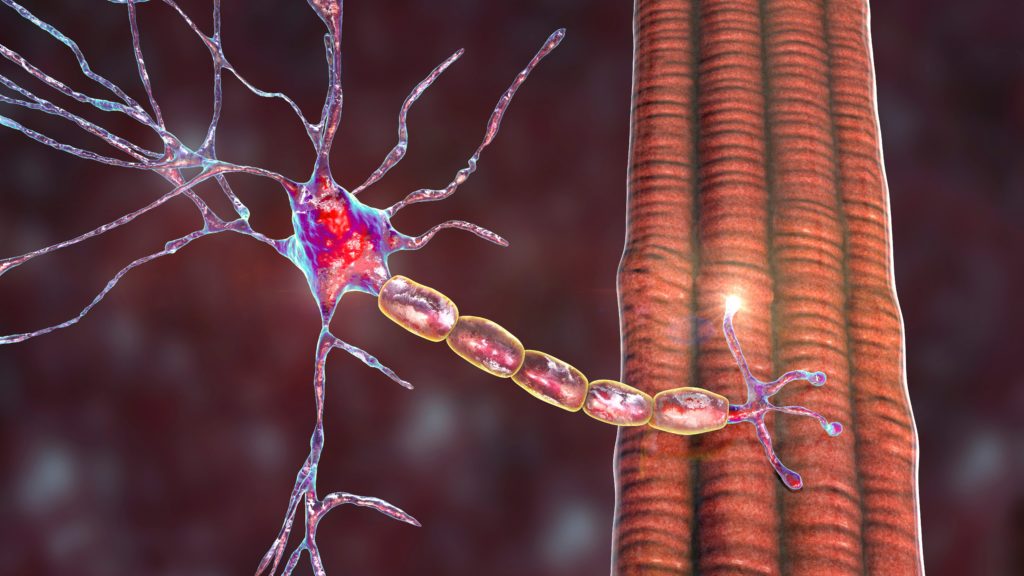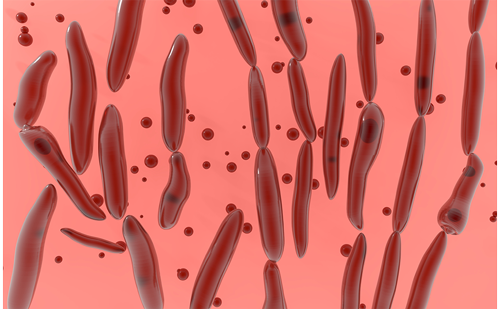Both “nervous system Lyme disease” and “chronic Lyme disease” are labels that are used in quite different ways, leading to controversy, frustration, distrust, and worse. Most neurologists use the first to describe patients with unambiguous nervous system infection with Borrelia burgdorferi, the tickborne spirochete responsible for Lyme disease. Most infectious-disease and other specialists, if they use the second term at all, use it to describe patients with clear evidence of long-standing, untreated infection with this organism, in the US typically causing a relapsing large-joint oligoarthritis. In contrast to these well-defined disorders, there is a much more prevalent and potentially disabling disorder, often referred to as “chronic fatigue” or, as recently suggested by an Institute of Medicine (IOM) panel, “systemic exertion intolerance disease” (SEID)1 in which patients experience severe fatigue, cognitive slowing, and a variety of other quite limiting symptoms. Some patients with the latter disorder are diagnosed with “chronic Lyme disease” and led to believe this constitutes a difficult-to-treat nervous system infection with B. burgdorferi. Although this divergence of word usage is problematic, several underlying facts appear clear.
First, as evidenced by the IOM study, there is no doubt that there is a large group of individuals, as many as 2 % of the population,2 severely disabled by chronic fatigue states—states for which conventional medicine offers neither definitive diagnosis nor consistently effective treatment. The fact that patients disabled by this disorder are often frustrated and even desperate for help, is a truism. Similarly, it is clear that Lyme disease involves the nervous system in 10–15 % of B. burgdorferi-infected individuals.3 Manifestations are actually no more difficult to understand than in other nervous system disorders. Infection takes one of two forms—meningitis (infection and inflammation of the lining of the brain—painful but not the cause of nervous system damage) or multifocal inflammation of the peripheral (PNS; common) or central (CNS; quite rare) nervous system. The former most commonly causes a cranial neuropathy (most often facial-nerve paralysis) or painful radicular symptoms, but, as first described by Hopf,4 and occurring in virtually all experimentally infected monkeys,5 also a more diffuse polyneuropathy or mononeuropathy multiplex.6,7 On rare occasions, primarily in patients infected with B. garinii (the most common cause of neuroborreliosis in Europe), there may be spinal cord inflammation at the level of radicular involvement, or, rarely, brain inflammation.8 These disorders are all straightforward to diagnose and highly responsive to appropriate antimicrobial therapy, although as with any nervous system disorder, if there has been structural damage, reversibility of existing deficits may be incomplete.
So where is the controversy? Early in our evolving understanding of Lyme disease, it became apparent that, just as in patients with other systemic infectious and inflammatory disorders, many affected individuals experienced fatigue, cognitive slowing, and a variety of other nonspecific symptoms.9–11 It soon became clear that, in contrast to very rare patients with focal brain infection, most appropriately referred to as Lyme encephalitis, virtually no patients with these nonspecific symptoms had anything to suggest CNS infection. Consequently, this disorder was termed “Lyme encephalopathy,” specifically to differentiate it from true CNS neuroborreliosis. This disorder is indistinguishable from the “toxic metabolic” encephalopathy seen in patients with inflammatory disorders as diverse as bacterial pneumonia or active rheumatoid arthritis, in
which it is presumed to be mediated by cytokines or other soluble neuroimmunomodulators.12 As some focused on these clinical phenomena, two facts were lost. First, there is absolutely nothing unique or specific about this encephalopathy. Second, affected patients had unambiguous evidence of extra-neurologic, active B. burgdorferi infection and resulting inflammation. As inflammation subsided with treatment, so did these neurobehavioral symptoms. Misunderstandings about this encephalopathy, combined with the shortcomings of early diagnostic tests—and persisting misunderstandings about both—have resulted in the continuing “debate.”
One school of thought holds that “chronic Lyme disease” (defined in essence as patients with chronic fatigue states attributed to ongoing B. burgdorferi infection13) is due to the presence of spirochetes, presumed to be in small numbers, hidden from the host immune response, perhaps by becoming encysted, embedded in a biofilm, or some other mechanism. The logical paradox of this model (notwithstanding the scant evidence supporting it) is that in patients with Lyme disease, or other infections, these clinical phenomena are thought to be caused by circulating immunomodulators—produced as a result of the host immune response’s identification of and response to the causative microorganisms. If there is no host immune activation in response to these hidden organisms, there is no plausible pathophysiologic mechanism to explain these symptoms.
Some have suggested that given that even current diagnostic tests are not 100 % sensitive, and given the challenges of treating nervous system infections, perhaps, in the absence of other options, patients with the symptom complex referred to as “chronic Lyme” should be treated aggressively for possible neuroborreliosis anyway. The problem here is that multiple studies have clearly shown that additional and prolonged courses of antimicrobial therapy do not benefit these patients, but do carry significant risk of harm. Treated patients can develop antibioticassociated diarrhea, allergic reactions, and intravenous access-site infections among other complications. Such antibiotic overuse also clearly contributes to the increasing prevalence of antibiotic-resistant microbes14–17 affecting the broader population. Perhaps paradoxically, while prolonged treatment is said to be needed for these patients thought to have a small bacterial load,18 it is quite clear that parenchymal CNS neuroborreliosis is highly responsive to limited courses of parenteral— and probably even oral—antibiotics.18
Despite major improvements in diagnostic testing, some still assume incorrectly that test sensitivity is poor. As with any serologic test, it takes time for sufficient antibodies to be produced to be identifiable. In Lyme
disease within 4–6 weeks of initial infection, virtually all patients will have positive two-tiered serologic testing (screening with an enzyme-linked immunosorbent assay [ELISA], confirmed by Western blot, the current standard).19 Measurement of antibody to a specific antigenic domain, C6, appears to be quite sensitive as well and is being increasingly adopted instead of conventional ELISA. On the other hand, tests performed in a number of “specialty labs,” interpreted by their own criteria, have not been validated and seem to correlate poorly with other more compelling evidence of B. burgdorferi infection. If seronegative Lyme disease exists outside the early time window, it is quite rare. False positives, on the other hand, particularly immunoglobulin M (IgM), do occur in many inflammatory states. For this reason IgM criteria should not be used after the first 4–6 weeks, by which time IgG ELISAs should be positive. To avoid false positives, the latter should always be confirmed with Western blots.
CNS B. burgdorferi infection, as with any CNS infection, can be expected to elicit a spinal fluid (CSF) pleocytosis. Patients with PNS involvement may have concurrent CNS involvement and a pleocytosis, but this is a co-occurrence, not a requirement. In addition, patients in whom CNS infection is prolonged will frequently—but probably not invariably— have intrathecal production of anti-B. burgdorferi antibody in the CSF,18 ascertainable by measuring antibody simultaneously in CSF and serum, correcting for blood–brain barrier permeability. Parenchymal CNS involvement is rare but when it occurs causes clinical and imaging (increased T2 signal on magnetic resonance imaging (MRI), typically contrast enhancing) evidence of focal CNS infection.8 In patients with such focal CNS parenchymal infection, intrathecal antibody production is virtually always present. Finally, neurologic disease that clearly is due to CNS infection is almost invariably cured by 2- to 4-week courses of conventional antibiotics, likely including oral doxycycline.18
Given these basic facts, how do we best try to help patients with possible nervous-system Lyme disease and patients with SEID or “chronic Lyme disease?” As should be clear, diagnosis and treatment of the former is generally straightforward. For the latter, while acknowledging the disabling nature of this symptom complex in many patients, and the need for a far-better understanding of its pathophysiology and treatment, we should also understand that there is no evidence that it is caused by chronic, insidious infection with B. burgdorferi—either within or outside the nervous system. Nor is there evidence that prolonged and unconventional antimicrobial therapy provides any significant or lasting benefit. In approaching such individuals, we need to balance our wish to help with the necessity of first doing no harm.













